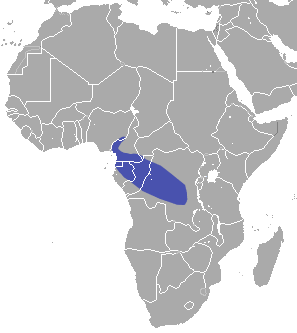
Herring are forage fish, mostly belonging to the family of Clupeidae.
The least gerbil is distributed mainly in South Sudan, southwestern Ethiopia, Kenya, and Tanzania.
The Agag gerbil is distributed mainly in southern Mauritania to northern Nigeria and Sudan. IUCN lists the junior synonyms Gerbillus cosensi and G. dalloni as critically endangered.
The Cypriot mouse is a species of mouse endemic to Cyprus. Its primary habitat seems to be the vineyards and fields of the Troödos Mountains region.

A species that is extinct in the wild (EW) is one that has been categorized by the International Union for Conservation of Nature as known only by living members kept in captivity or as a naturalized population outside its historic range due to massive habitat loss.

Kemp's gerbil is a species of rodent. Mammal Species of the World considers G. kempi and G. gambianus to be synonyms, however the IUCN has assessed each taxon as were they different species.

The Ugandan lowland shrew or Moon shrew, is a species of mammal in the family Soricidae. It is found in Kenya and Uganda. Its natural habitats are subtropical or tropical swamps and montane forests.

The greater forest shrew is a species of mammal in the family Soricidae found in Cameroon, the Central African Republic, the Republic of the Congo, Equatorial Guinea, Gabon, and Nigeria. Its natural habitat is subtropical or tropical moist lowland forest.
Antimima argentea is a species of plant in the family Aizoaceae. It is endemic to Namibia. Its natural habitat is subtropical or tropical dry shrubland.

Antimima is a succulent plant genus in the family Aizoaceae, indigenous to South Africa and Namibia.
Antimima aurasensis is a species of plant in the family Aizoaceae. It is endemic to Namibia. Its natural habitats are subtropical or tropical dry shrubland and rocky areas.
Antimima eendornensis is a species of plant in the family Aizoaceae. It is endemic to Namibia. Its natural habitats are subtropical or tropical dry shrubland and rocky areas. It is threatened by habitat loss.
Antimima modesta is a species of plant in the family Aizoaceae. It is endemic to Namibia. Its natural habitats are subtropical or tropical dry shrubland and rocky areas.
Antimima quartzitica is a species of plant in the family Aizoaceae. It is endemic to Namibia. Its natural habitat is rocky areas. It is threatened by habitat loss.

The World's 25 Most Endangered Primates is a list of highly endangered primate species selected and published by the International Union for Conservation of Nature (IUCN) Species Survival Commission (SSC) Primate Specialist Group (PSG), the International Primatological Society (IPS), Global Wildlife Conservation (GWC), and Bristol Zoological Society (BZS). The IUCN/SSC PSG worked with Conservation International (CI) to start the list in 2000, but in 2002, during the 19th Congress of the International Primatological Society, primatologists reviewed and debated the list, resulting in the 2002–2004 revision and the endorsement of the IPS. The publication was a joint project between the three conservation organizations until the 2012–2014 list when BZS was added as a publisher. The 2018–2020 list was the first time Conservation International was not among the publishers, replaced instead by GWC. The list has been revised every two years following the biannual Congress of the IPS. Starting with the 2004–2006 report, the title changed to "Primates in Peril: The World's 25 Most Endangered Primates". That same year, the list began to provide information about each species, including their conservation status and the threats they face in the wild. The species text is written in collaboration with experts from the field, with 60 people contributing to the 2006–2008 report and 85 people contributing to the 2008–2010 report. The 2004–2006 and 2006–2008 reports were published in the IUCN/SSC PSG journal Primate Conservation,, since then they have been published as independent publications.
Antimima is a genus of moths in the family Notodontidae. It was first described by Alfred Jefferis Turner in 1917. Its type species is Antimima cryptica. Species from the genus are found in Australia.







